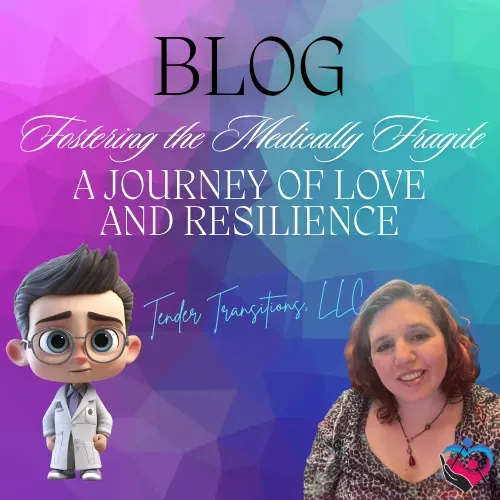How Does the Foster Care System Work: A Comprehensive Guide
Today, we’re diving into a fundamental question that many people have: “How does the foster care system work?” Understanding the ins and outs of the foster care system is crucial for anyone considering becoming a foster parent or working within this field. Let’s break it down in a clear, informative, and compassionate way.
Understanding Foster Care
At its core, the foster care system is designed to provide temporary care for children who are unable to live with their birth families due to various reasons, such as abuse, neglect, or other challenging circumstances. The goal is to ensure that these children have a safe and nurturing environment while efforts are made to either reunite them with their families or find a permanent placement through adoption.
The Process of Foster Care
Initial Reporting and Investigation
The process begins when someone reports a concern about a child’s welfare, which could come from teachers, doctors, neighbors, or even family members. Child Protective Services (CPS) or a similar agency will investigate the report to determine whether the child is in immediate danger or at risk of harm. If the investigation finds that the child needs protection, the agency will seek a court order to place the child in foster care.
Emergency Placement
If a child is found to be in imminent danger, they may be placed in emergency foster care. This is often a temporary arrangement with a licensed foster family or a group home. Emergency placements are designed to ensure the child’s immediate safety while a more permanent solution is determined.
Assessment and Placement
Once the immediate crisis is managed, the foster care agency conducts a thorough assessment to determine the child’s needs and the best type of placement. This involves evaluating the child’s medical, emotional, and educational needs, and finding a foster home that can meet those needs.
Foster parents are required to go through a rigorous approval process, including background checks, home studies, and training. The goal is to match the child with a foster family that can provide a stable and supportive environment.
Ongoing Support and Monitoring
Once a child is placed with a foster family, the agency continues to provide support. This includes regular home visits by social workers, ongoing case management, and connecting the foster family with additional resources if needed. The agency monitors the child’s well-being and the foster family’s ability to meet the child’s needs.
Reunification or Permanency Planning
The ultimate goal of foster care is to either reunite the child with their birth family or find a permanent placement. Reunification is pursued if the birth parents can address the issues that led to the child’s removal and demonstrate their ability to provide a safe environment. This process involves a series of court hearings and assessments to ensure that reunification is in the child’s best interest.
If reunification is not possible, the agency will work on finding a permanent solution, such as adoption. In cases where adoption is not feasible, the child may be placed in long-term foster care with a family who can provide stability and support until they reach adulthood.
Key Players in the Foster Care System
There are several people responsible for the wellbeing and care of children in the foster care system. There are five groups, however, who are the key players in the foster care system. It’s important to know who these groups are and their responsibilities if you are going to understand how the foster care system works.
- Child Protective Services (CPS) or Equivalent Agencies: These agencies are responsible for investigating reports of abuse or neglect, placing children in foster care, and overseeing their well-being.
- Foster Parents: Individuals or families who provide temporary care for children in the foster care system. Foster parents play a crucial role in offering stability and support during a child’s time in care.
- Social Workers and Case Managers: These professionals manage cases, conduct assessments, and ensure that both the child’s and foster family’s needs are being met. They are also responsible for facilitating communication between the child, the birth family, and the foster family.
- Judges and Court Personnel: The court system is involved in making legal decisions regarding the child’s future, including decisions about reunification, adoption, or long-term placement.
- Advocates and Support Organizations: Various organizations and advocates work to support children in foster care and foster families, offering resources, guidance, and support throughout the process.
Challenges and Considerations
The foster care system, while designed with the best intentions, faces several challenges. These include:
- Lack of Resources: Many foster care systems are under-resourced, which can lead to difficulties in finding suitable placements and providing adequate support.
- Emotional Impact: Children in foster care often face significant emotional challenges due to their past experiences and the instability of their current situation.
- Foster Parent Support: Foster parents may struggle with the emotional and logistical aspects of caregiving, especially if they are not adequately supported by the system. That is why Tender Transitions is here. We offer support, training, and coaching to foster parents of medically fragile children.
The Role of Foster Parents
Foster parents are vital to the success of the foster care system. They provide a loving and stable environment for children during a critical time in their lives. To be effective, foster parents need to be prepared for the challenges and rewards of fostering. This includes undergoing training, understanding the system, and having access to support networks and resources.
Conclusion
The foster care system is a complex, multifaceted structure designed to protect and care for vulnerable children. By understanding how it works, you can better support those involved, whether you’re a prospective foster parent, a current caregiver, or someone interested in the system’s workings. Remember, at Tender Transitions, we are here to guide and support foster parents every step of the way. Your role in this system is invaluable, and together, we can make a significant difference in the lives of children who need it most.

